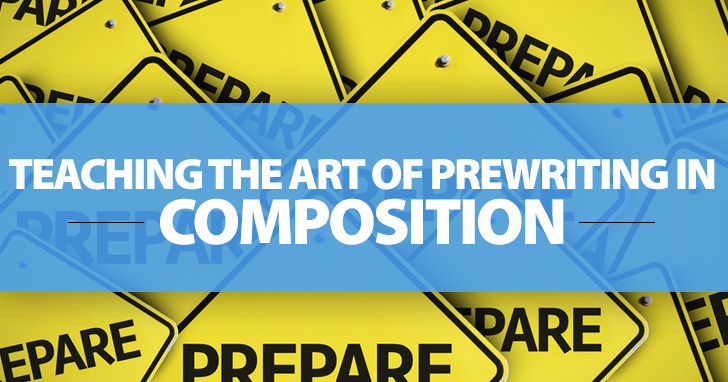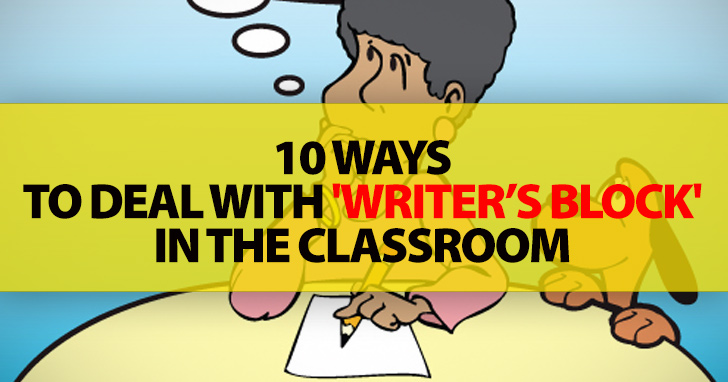Teaching the Art of Prewriting in Composition


The myth of writer’s block is so persistent in fact that it has filtered its way down to freshman and developmental writers, who have no other artistic pretensions related to writing. The first few times students made this claim of “writer’s block” in class, I was so dumbfounded that I bought into it and suggested a couple of alternate exercises for the students to engage in until inspiration returned--which they promptly took advantage of by spending the session chatting with their classmates on topics related to anything but writing, leading me of course to question this “blockage.” Persistent myths take a long time to die; however, there are some ways to assist in their demise.

When students make claims of having this disorder of being “blocked”, challenge the diagnosis. What exactly is “blockage”? What are its symptoms, and why does the student think she has it? Sometimes by analyzing the syndrome, the fallacy of writer’s block can be exposed.
Even given this myth has some factual basis, and the student is indeed blocked, this does not relieve her of responsibility of addressing the problem. Math students do not suffer from calculus block; plumbers who stay home from work because of plumbing block would probably lose their jobs. Similarly, writers should be expected to address their “writer’s block” on their own if they want to keep their grade point average or their jobs.
Providing a list of writing topics/prompts/things to write about can serve as a treatment for being “blocked.” Pull out the topics when students claim to be blocked and challenge them to choose one of the topics and develop at least one paragraph in response. The topics should be related to whatever assignment the student is working on. The notes on the prompt can then be used as a basis for the writing assignment.
If blocked students claim not to like the writing prompts you brought in, challenge them to come up with their own topics--ideas, topics, and issues that interest them. If they claim not to have any such ideas--an entirely predictable course of events, taking us back to the entire problem--then tell them to return to the topics you brought in: they may either write their own prompts, respond to the ones you brought in, or lose points for that day. Faced with this list of choices, the writer’s block often mysteriously evaporates and the student is able to come up with her own ideas
Blocked students who don’t want to or can’t write often do like to talk to their peers--so work with this tendency. Students may talk with their peers, as long as the discussion is related to the writing topic. Have them take notes on the discussion as part of the condition of engaging in the discussion. The student at this point may very well become unblocked and find something she really does want to write about and use the notes from the discussion.
The news is full of interesting ideas: crime, current events and issues at both a national and local level as well as human interest items. Have students look through the newspaper, discuss it, and come up with at least one idea to develop from the newspaper. Similarly, a typical news broadcast will be full of topics and events for both discussion and writing.
Along with exposure to the news, just taking a walk outside will open students to the broader world: landscape, people, and conversations outside the classroom. They can then come back to the classroom and discuss what they experienced, again taking notes on it. For example, they may have seen a couple in heated discussion and come up with some ideas regarding gender roles and relationships. Seeing the sprinklers going full blast across a carefully kept and unnaturally green lawn at the height of a California summer (when grass not meticulously tended turns brown) can lead to some considerations about appropriate allocation of water resources. Often just a change of environment like this will shift attitudes and give a fresh perspective that students can take some notes on for writing after discussion with peers. Engaging in discussion and writing related to the walk outside should be a condition of the assignment, however, with resulting loss of credit if this step is not taken.
Once students have read some articles/prompts, gone out into the wide world, and discussed what they have found, it’s time to do some free writing, their response to some of these stimuli, which will serve as the basis for an academic essay.
Students now have some material, some notes, and some freewriting to work with from news articles, observations of the environment, discussion and so forth. They may now be concerned with synthesizing the material, putting it together into a coherent whole on a topic. The teacher can at this point suggest some methods of organization and of paraphrasing and summarizing the raw material into development for an essay assignment.
Especially for fiction, but also for nonfiction, students can be taught to modify the material, shortening it, for example. Rather than summarizing a whole news article, the student should just use a few sentences of paraphrasing or short summary as support for a point the student wants to make in her essay. For fiction, the report of a crime can be changed around, with names, dates, and the actual crime altered slightly or a lot depending on the purpose of telling the story because at this point the story is fiction, with the actual event just providing the seed of an idea.
However, with persistence and use of some strategies, the instructor can work toward dispelling the myth and assist students in becoming independent writers.